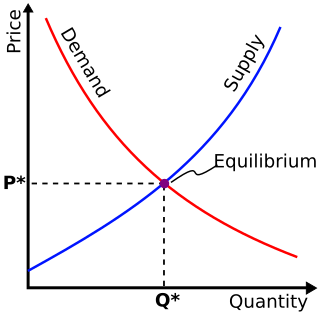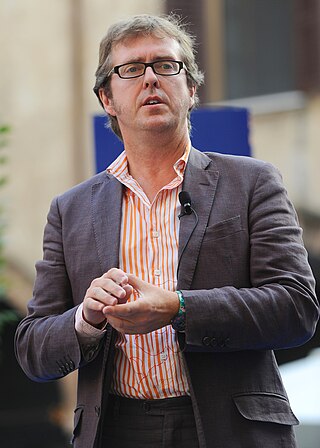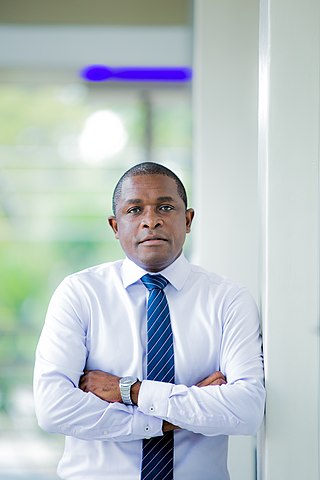Related Research Articles

Financial economics is the branch of economics characterized by a "concentration on monetary activities", in which "money of one type or another is likely to appear on both sides of a trade". Its concern is thus the interrelation of financial variables, such as share prices, interest rates and exchange rates, as opposed to those concerning the real economy. It has two main areas of focus: asset pricing and corporate finance; the first being the perspective of providers of capital, i.e. investors, and the second of users of capital. It thus provides the theoretical underpinning for much of finance.
Financial engineering is a multidisciplinary field involving financial theory, methods of engineering, tools of mathematics and the practice of programming. It has also been defined as the application of technical methods, especially from mathematical finance and computational finance, in the practice of finance.
John C. Hull is a professor of Derivatives and Risk Management at the Rotman School of Management at the University of Toronto.
Financial modeling is the task of building an abstract representation of a real world financial situation. This is a mathematical model designed to represent the performance of a financial asset or portfolio of a business, project, or any other investment.

Emanuel Derman is a South African-born academic, businessman and writer. He is best known as a quantitative analyst, and author of the book My Life as a Quant: Reflections on Physics and Finance.
The following outline is provided as an overview of and topical guide to finance:
A master's degree in quantitative finance is a postgraduate degree focused on the application of mathematical methods to the solution of problems in financial economics. There are several like-titled degrees which may further focus on financial engineering, computational finance, mathematical finance, and/or financial risk management.
Mark Edward Rubinstein was a leading financial economist and financial engineer. He was Paul Stephens Professor of Applied Investment Analysis at the Haas School of Business of the University of California, Berkeley. He held various other professional offices, directing the American Finance Association, amongst others, and was editor of several first-tier academic journals including both the Journal of Financial Economics and the Journal of Finance. He was the author of numerous papers and four books.
Neil A. Chriss is a mathematician, academic, hedge fund manager, philanthropist and a founding board member of the charity organization "Math for America" which seeks to improve math education in the United States. Chriss also serves on the board of trustees of the Institute for Advanced Study.

Paul Wilmott is an English researcher, consultant and lecturer in quantitative finance. He is best known as the author of various academic and practitioner texts on risk and derivatives, for Wilmott magazine and Wilmott.com, a quantitative finance portal, and for his prescient warnings about the misuse of mathematics in finance.
A Master of Financial Economics is a postgraduate master's degree focusing on theoretical finance. The degree provides a rigorous understanding of financial economics, emphasizing the economic framework underpinning financial and investment decisioning. The degree is postgraduate, and usually incorporates a thesis or research component. Programs may be offered jointly by the business school and the economics department. Closely related degrees include the Master of Finance and Economics and the Master of Economics with a specialization in Finance. Since 2014 undergraduate degrees in the discipline have also been offered.
Salih Nur Neftçi was a leading expert in the fields of financial markets and financial engineering. He served many advisory roles in national and international financial institutions, and was an active researcher in the fields of finance and financial engineering. Neftçi was an avid and highly regarded educator in mathematical finance who was well known for a lucid and accessible approach towards the field.
Quantitative analysis is the use of mathematical and statistical methods in finance and investment management. Those working in the field are quantitative analysts (quants). Quants tend to specialize in specific areas which may include derivative structuring or pricing, risk management, investment management and other related finance occupations. The occupation is similar to those in industrial mathematics in other industries. The process usually consists of searching vast databases for patterns, such as correlations among liquid assets or price-movement patterns.
Mathematical finance, also known as quantitative finance and financial mathematics, is a field of applied mathematics, concerned with mathematical modeling in the financial field.
Riccardo Rebonato is Professor of Finance at EDHEC Business School and EDHEC-Risk Institute, Scientific Director of the EDHEC Risk Climate Impact Institute (ERCII), and author of journal articles and books on Mathematical Finance, covering derivatives pricing, risk management, asset allocation and climate change. In 2022 he was granted the PRM Quant of the Year award for 'outstanding contributions to the field of quantitative portfolio theory'. Prior to this, he was Global Head of Rates and FX Analytics at PIMCO.

Robert F. Almgren is an applied mathematician, academic, and businessman focused on market microstructure and order execution. He is the son of Princeton mathematician Frederick J. Almgren, Jr. With Neil Chriss, he wrote the seminal paper "Optimal Execution of Portfolio Transactions," which Institutional Investor said "helped lay the groundwork for arrival-price algorithms being developed on Wall Street." In 2008 with Christian Hauff, he cofounded Quantitative Brokers (QB), a financial technology company providing agency algorithmic execution in futures and interest rate markets. He is currently chief scientist at QB and a professor of the Practice in Operations Research and Financial Engineering at Princeton University.
David Clay Heath was an American probabilist known for co-inventing the Heath–Jarrow–Morton framework to model the evolution of the interest rate curve.

Marco Avellaneda (Ph.D.) was an Argentine-American mathematician and financial consultant. He was the director of the Division of Financial Mathematics at the Courant Institute at New York University.

Blessing Mudavanhu is a Zimbabwean mathematician, corporate executive, academic, businessman and entrepreneur, who is the founder and president of Dura Capital Limited, a company that he founded in 2006, at the age of 35 years. Effective 1 June 2018, he serves as the Group CEO of CBZ Holdings, a financial services conglomerate (company) in Zimbabwe.
References
- ↑ "Jim Gatheral left Merrill Lynch to join Baruch MFE program | QuantNet". Quantnet.com. March 5, 2010. Retrieved October 21, 2010.
- ↑ "The Jim Gatheral Effect: How This Top Quant Has Changed Baruch College".
- ↑ "Baruch College's Master of Financial Engineering (MFE) program". Mfe.baruch.cuny.edu. Retrieved October 21, 2010.
- ↑ "Winners". Risk Awards. Retrieved November 27, 2021.